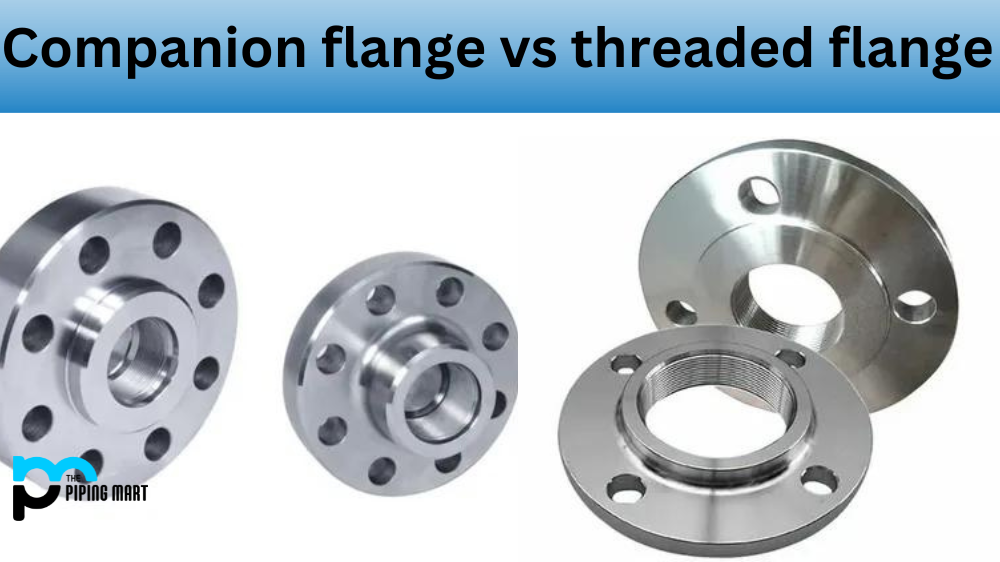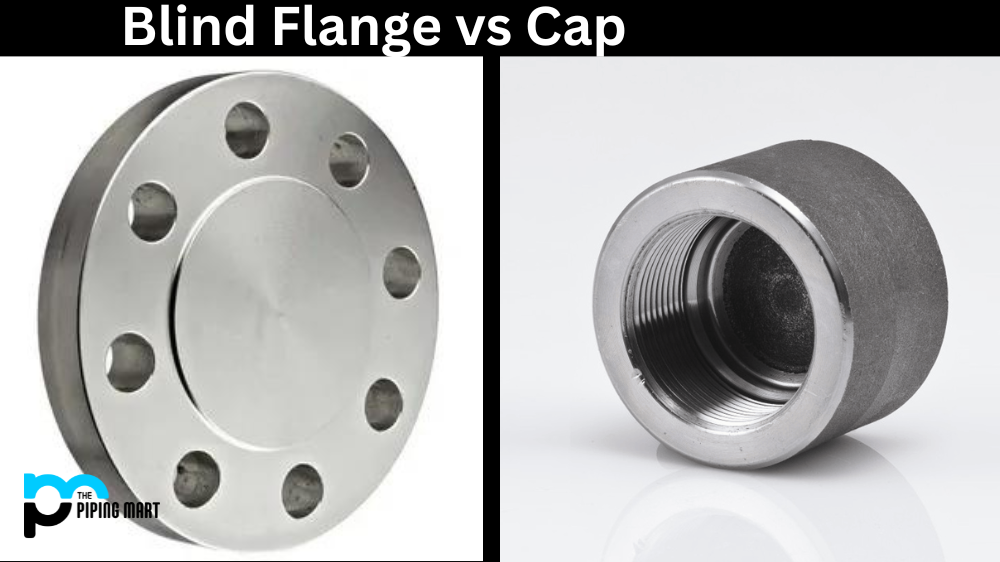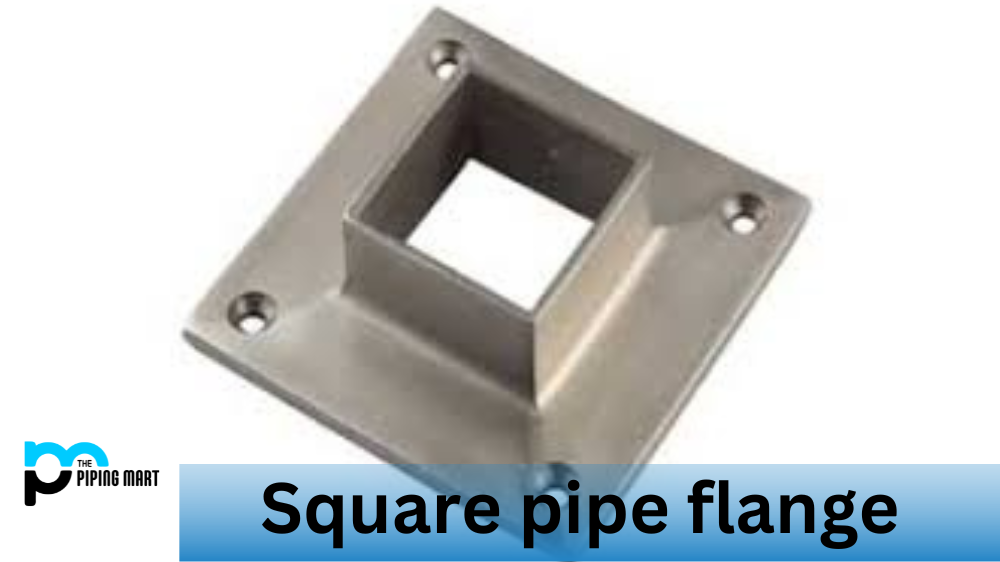Companion Flange
A companion flange is essentially an integral part of the pipe or fitting it connects to, instead of being welded or screwed into place. This makes them ideal for applications where the connection needs to be secure and reliable, as there is no risk of any gaps forming between the fitting and the pipe. Companion flanges are known for their enhanced resistance to vibration, contributing to their stability and reliability in various applications, ensuring secure connections without compromising performance. This makes them ideal for applications that involve high pressures or temperatures, such as steam systems or high-pressure piping in chemical plants. However, one downside of companion flanges is that they require welding expertise to install correctly, which can add to installation costs.
Threaded Flange
Threaded flanges offer straightforward installation, requiring no specialized welding expertise, making them accessible for various users. Their threaded connection method ensures ease of assembly, although it’s essential to properly seal the gap between the fitting and the pipe to prevent potential leaks. Moreover, companion flanges, known for their resistance to vibration, provide added stability, enhancing reliability in various applications. Threaded connections are particularly advantageous in low-pressure piping systems, where their convenience and reliability are evident.
Difference Between Companion Flanges and Threaded Flanges
- A companion flange is a type of flange that is used in piping systems. It is designed to be used with a slip-on flange or a weld neck flange.
- A threaded flange is a type of flange that is used in piping systems. It is designed to be used with a threaded pipe or fitting.
- Companion flanges are typically made from carbon steel, stainless steel, or aluminium. Threaded flanges are typically made from carbon steel or stainless steel.
- Companion flanges are typically used in low-pressure applications. Threaded flanges are typically used in high-pressure applications.
- Companion flanges are attached to the pipe by welding or bolting. Threaded flanges are attached to the pipe by threading it onto the fitting.
- Companion flanges are available in a variety of sizes and pressure ratings. Threaded flanges are also available in a variety of sizes and pressure ratings.
Conclusion:
When it comes down to choosing between a companion flange and a threaded flange for your application, there are several factors you need to consider before making a decision. Companion flanges offer superior strength due to their tight fit, but require welding expertise for installation. In contrast, threaded flanges offer ease of installation but may not provide enough resistance against vibration in certain applications. Ultimately, which type of flanges you choose will depend on your specific needs and requirements for your project. Both types have advantages depending on what you need from your connection; make sure you do your research when deciding which one is right for you!

Pipingmart is a B2B portal that specializes in metal, industrial and piping items. Additionally, we share the latest information and information about materials, products and various types of grades to assist businesses that are involved in this business.




